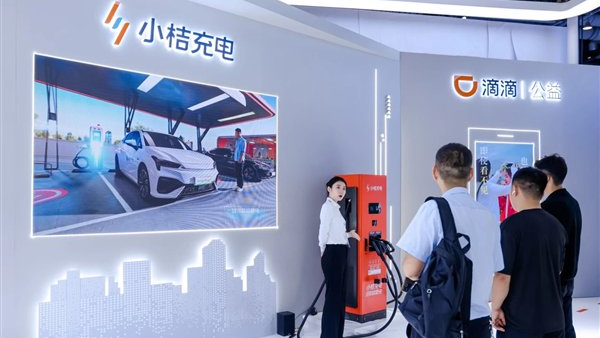Didi’s Orange Charging unveils 1600 kW ultra-fast charging pile
Orange Charging, an affiliate of ride-sharing giant Didi, has introduced a liquid-cooled, flexible, shared megawatt supercharging pile capable of delivering a maximum output of 1,600 kW. Developed in collaboration with a charging pile manufacturer, this new technology promises to add 100 kilometres of range in just one minute of charging.
The innovative charging pile is equipped with the upgraded “Orange Charging unicorn OS intelligent system,” which enables flexible power distribution. Currently, the Orange Charging platform boasts over 46,000 charging stations, with more than 47% offering a single-gun maximum charging power of 180kW or more.
This unveiling by Orange Charging aligns with a broader industry trend towards megawatt flash charging, a technology designed to drastically reduce EV charging times, aiming to make them comparable to refuelling a gasoline vehicle. Several prominent companies, including BYD, Huawei, Zeekr, and CATL, are heavily investing in this area.

- BYD has already launched its “megawatt flash charging” technology, capable of up to 1000 kW with a single connector and 1360 kW with a dual connector.
- Huawei is focusing on high-power charging solutions, particularly for heavy-duty trucks, and has teased a 1.5 MW charger.
- Zeekr has introduced V4 charging piles and a liquid-cooled charging station for passenger cars with a peak power of 1.2 MW using a single connector.
- CATL is actively developing battery technologies to support these high charging rates.
Furthermore, some Chinese cities are planning to establish “supercharging cities” to support the widespread adoption of this technology.
While megawatt charging offers impressive theoretical speeds, its practical implementation faces several challenges. These include potential impacts on power grid stability, high costs, and concerns regarding battery life. The high cost of liquid-cooled charging infrastructure, ranging from 80,000 to 120,000 yuan (11,200 to 16,800 USD) per unit, along with the cost of coolant replacement, also limits its widespread availability.
To mitigate these issues, advancements are being made in energy storage solutions, improvements in battery materials, and the use of AI algorithms to optimise charging curves. There are also efforts to promote integrated photovoltaic energy storage and charging solutions. Companies like BYD are integrating energy storage systems and intelligent power distribution to alleviate strain on the power grid. The industry is also exploring collaborations to accelerate infrastructure construction and overcome challenges related to grid capacity, infrastructure upgrades, deployment costs, and sustainable business models.
Source: Sina



